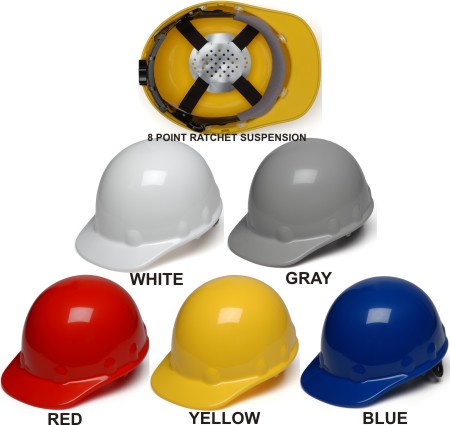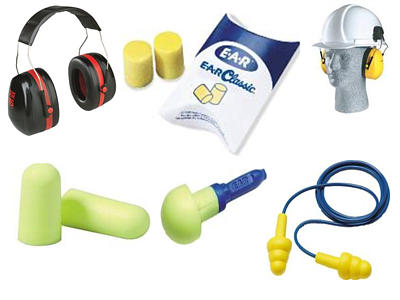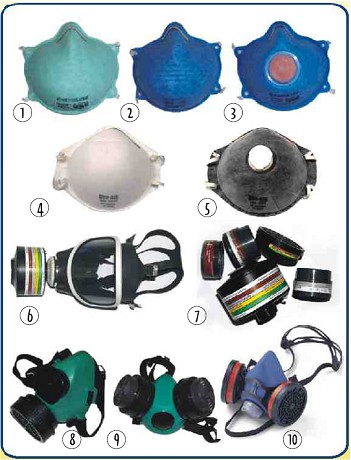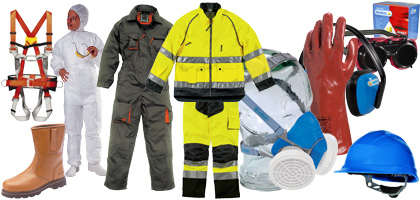Personal Protective Equipment (PPE)
By dciflooringUncategorizedWhat is Personal Protective Equipment (PPE)?
Hard Hats
Workers are required to wear the specified hard hat to protect themselves from objects that may come in contact with their head. This includes working in a factory, warehouse, or laboratory. Some workplaces require specialty hard hats depending on the hazards.
Specialty types of hard hats include those with miner’s light attachments, reflective stripe for night work, face shields for welders, and attachments for visors or earmuffs.
Use of Hard Hats
Hard hats should be used when falling object hazards may result from activities including but not limited to:
- persons or operations where accidental dropping or loss of material, tools, equipment or other articles could lead to a head injury
- a barricaded or posted demolition or construction area where head hazards exist
- objects stored on shelves, platforms, etc. that may fall and cause head injury
- overhead exposed energized conductors nearby
Eye Protection
Eye injuries in the workplace are very common. The National Institute for Occupational Safety and Health (NIOSH) reports about 2,000 U.S. workers sustain job-related eye injuries that require medical treatment each day. However, safety experts and eye doctors believe the right eye protection could have lessened the severity or even prevented 90% of these eye injuries.
Potential eye hazards against which protection is needed in the workplace are:
-
Projectiles(dust, concrete, metal, wood and other particles)
-
Chemicals(splashes and fumes)
-
Radiation(especially visible light, ultraviolet radiation, heat or infrared radiation, and lasers)
-
Bloodborne pathogens(hepatitis or HIV) from blood and body fluids
The type of safety eye protection you should wear depends on the hazards in your workplace:
- If you are working in an area that has particles, flying objects, or dust, you must at least wear safety glasses with side protection (side shields)
- If you are working with chemicals, you must wear goggles
- If you are working near hazardous radiation (welding, lasers, or fiber optics) you must use special-purpose safety glasses, goggles, face shields, or helmets designed for that task
Hearing Protection
Ear Protection
- Molded earplugs
- Custom-molded earplugs
- Self-molded earplugs
- Ear muffs
For high noise levels, a combination of ear plugs and ear muffs generally provide the highest level of protection.
Respiratory Protection
Types of Protective Gloves
With a wide variety of hazards and resultant injuries that can occur, selecting the right glove can be a challenge. Both the hazard and the activity affect glove selection. Some of the needs that can inform the glove selection process include:
What needs protection?
- hand only
- forearm
- arm
- Thermal
- Electrical
- Vibration
- Cuts and punctures
- Wear and abrasion resistance
It is important for employees to use gloves specifically designed for the hazards and activities found on their job. Gloves designed for one activity/hazard may not adequately protect during a different activity/hazard. Fortunately, there are many types of gloves that protect against a variety of hazards. Generally, gloves fall into four categories:
- Leather, canvas or metal mesh gloves
- Fabric and coated fabric gloves;
- Chemical- and liquid-resistant gloves;
- Insulating rubber gloves.
Body Protection
Protective Body Clothing includes:
- Fully and non-encapsulated suits
- Aprons, leggings, sleeve protectors
- Heat protective suits
- Blast and fragmentation suits
- Cooling protective garments
- Radiation protective suits
- Coveralls made of impervious materials to prevent contact with hazardous chemicals and substances
Materials used for body protection:
Protective Footwear
Protective footwear must be worn when there is the hazard of:
- Falling or rolling objects
- Punctures
- Stubbing or banging
- Chemical or corrosive contact
- Electrical shock
- Burns
- Slips and falls
Determining Type of Footwear
Select protective footwear based on the hazard assessment. For example:
- Steel-toed shoes to resist impact (For falling objects, use footwear with steel toes.)
- Metatarsal guards to resist impact above the toes (Use metatarsal guards if there is the hazard to the metatarsal region above the toes.)
- Reinforced flexible metal soles or inner shoes to protect against punctures (unless there is a risk of electrical contact)
- Wear chemical resistant footwear (e.g., rubber, neoprene) in areas with potential chemical or corrosive splashes. Check the MSDS to match footwear with individual chemicals.
- Replace worn footwear.
- Sandals and open-toed shoes are prohibited in laboratories (including art studios), and food service areas (for safety and hygienic reasons)
At Dynamic Coatings Inc., safety is our first priority. We stress the proper use of Personal Protective Equipment (PPE) due to the amount of time our crew spends around big machinery and hazardous chemicals.We believe that safety is the first priority when on the job and that it should be that way in any workplace, regardless of industry. We hope that this information will help you better understand the severity of PPE.








